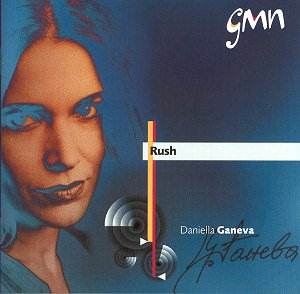|
|
Search MusicWeb Here |
|
 |
||
|
Founder:
Len Mullenger (1942-2025) Editor
in Chief:John Quinn
|
|
|
Search MusicWeb Here |
|
 |
||
|
Founder:
Len Mullenger (1942-2025) Editor
in Chief:John Quinn
|
 |
Stephen MACKEY (born 1956) Feels So Baaada Martin WESLEY-SMITH (born 1945) For Marimba and Tape Mark GLENTWORTH Blues for Gilbert Graham INSTRALL Chasmb Relatec David HORNE (born 1970) Rush Piers HELLAWELL (born 1956) Let’s Dance Recorded: St Silas’ Presbytery, Chalk Farm, London, January 1997 |
| CD available for post-free online mail-order or you may download individual tracks. For some labels you can download the entire CD with a single click and make HUGE savings. The price you see is the price you pay! The full booklet notes are available on-line. |  |
|
NOTE • Click on the button and you can buy the disc or read the booklet details • You can also access each track which you may then sample or down load. • Further Information. |
|
|
There are comparatively few records of music for solo percussion. The release under review has apparently been devised as a showcase for Daniella Ganeva’s performing skills since it includes works either regularly performed by her or written especially for her by composers from various musical horizons. Some of them are relatively well-known whereas others may be better known outside the realm of "traditional" classical music.
The young American composer Stephen Mackey is now making something of a reputation of his own (a full CD has recently been devoted to his music.) Feels So Baaad "arose as an antidote to the Chuck Magnione pop classic Feels So Good". This fairly crossover piece is scored for two percussion players, violin and electric guitar. Not uninteresting but a bit longish for its material. The Australian Martin Wesley-Smith may be somewhat better known. He has written several works for percussion, such as the highly entertaining White Knight and Beaver (1984). His For Marimba and Tape has some arresting sound textures, but is also a bit too long and somewhat lacking in variety. The young Scottish composer David Horne is also now making a name for himself. Rush calls for a larger array of percussion instruments, has many fine sonorities (e.g. bowed vibraphone), but I found it a bit directionless though the last section is more varied and animated. The Irish composer Piers Hellawell is a distinguished composer who has a considerable body of works to his credit. Percussion often features prominently in his pieces for orchestra or ensemble; so, no wonder that he has been drawn to writing a work for solo percussion. Let’s Dance (1996) has an appropriate dance-like character, and is a colourful eulogy of the dance.
Two composers were new to me here and, unfortunately enough, the notes do not tell us anything about them. Mark Glentworth’s Blues for Gilbert is a deeply-felt, bluesy elegy in memory of his teacher Gilbert Webster whose favourite instrument was the vibraphone. This short work is one of the finest ones in this CD. Graham Instrall, who also plays in Mackey’s piece and in his own works, is represented by two contrasted pieces : Relate which is again a bit rambling and which ends somewhat inconclusively, and Chasm, a curious title indeed, for this is in fact a setting of the Kyrie, of parts of the Gloria and the Sanctus, for children’s voices and percussion. The rhythmically declaimed Kyrie, accompanied by pounding drums and bells, is followed by a beautifully simple, ethereal setting of the opening lines of the Gloria accompanied by quietly chiming vibraphone. The sort of thing that Howard Skempton might have written. The Sanctus again opens in rhythmical declamation and ends in a dance-like section. I enjoyed this simple, deeply-felt work enormously.
I approached this CD with much trepidation and was eventually slightly disappointed by it. This has nothing to do with Daniella Ganeva’s technical and performing skills. I think that my mitigated response is due to the often limited scope of the pieces, as if some of the composers were a bit unsure about what they were to do in these pieces. Again, not uninteresting at all, but it is up to you to decide whether or not such crossover stuff may appeal to you.
Hubert Culot
|
Sample
Tracks |
|
ADDITIONAL INFORMATION •
You can sample only 30 seconds (or 15% if that is longer) of a given track. Select from the View tracks list. Each sample will normally start from the beginning but you can drag the slider to any position before pressing play. • PLEASE NOTE: If you are behind a firewall and the sound is prematurely terminated you may need to register Ludwig as a trusted source with your firewall software.
•You will need Quicktime to hear sound samples. Get a free Quicktime download here • If you cannot see the "Sample All Tracks" button you need to download Flash from here.
|
|
|
Return to Index |